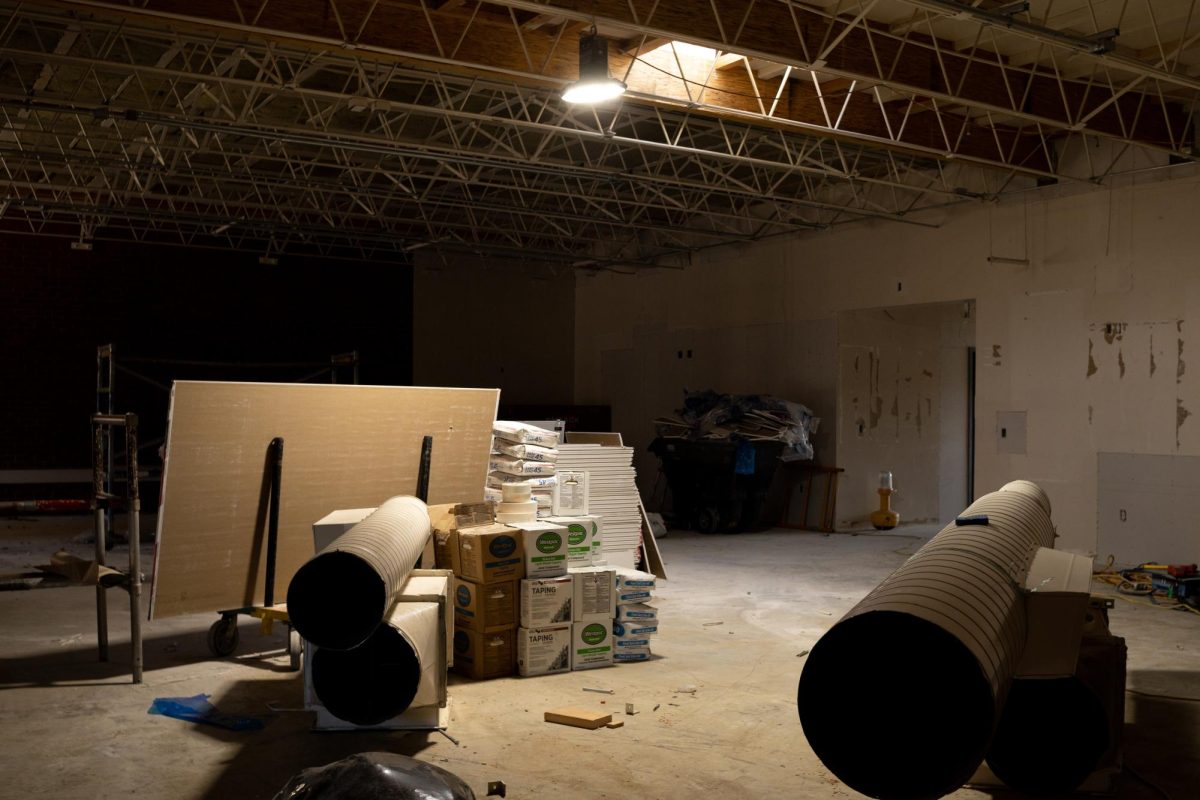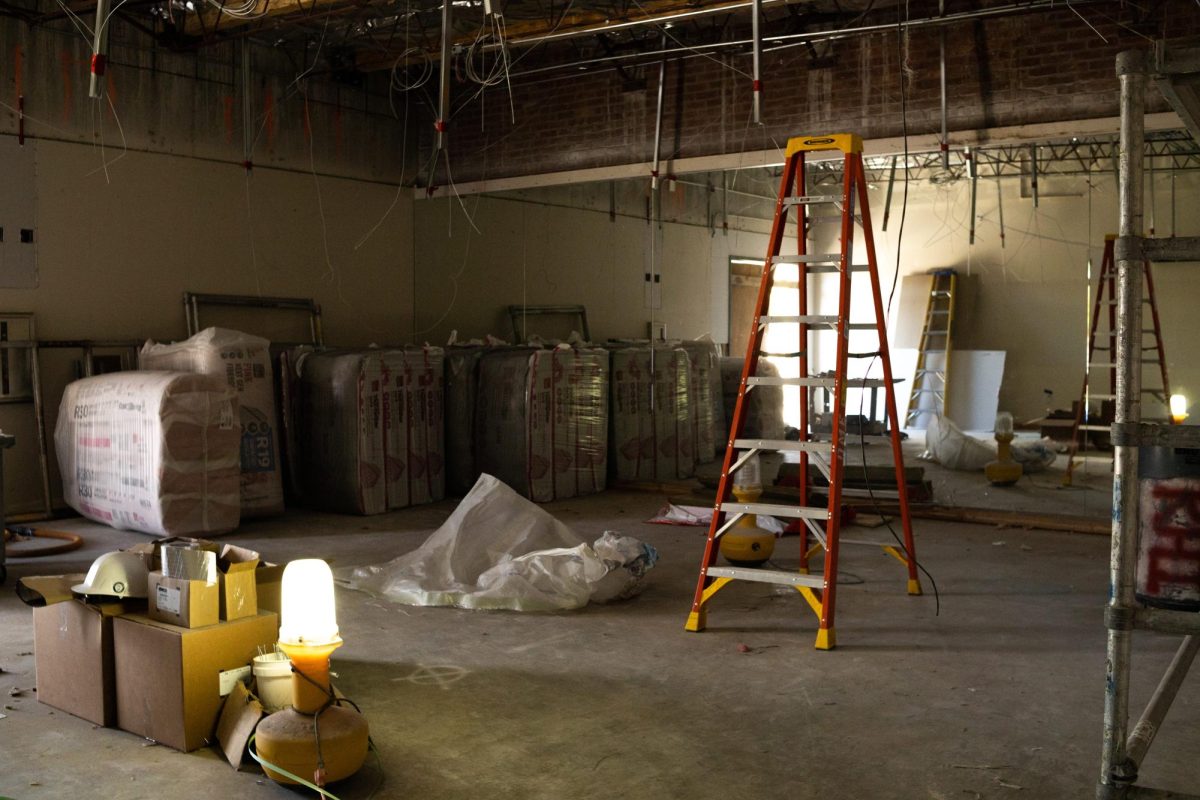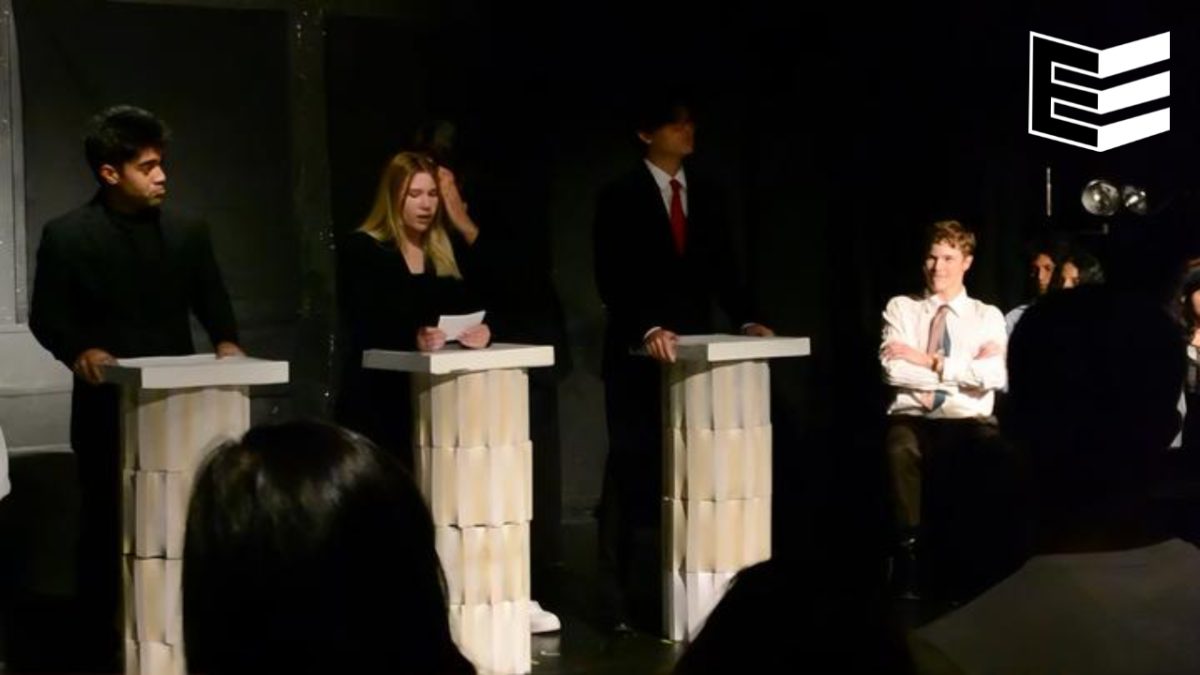Ten days before students returned to campus, the floor of the F building’s vocal music room was covered in bundles of Thermafiber insulation and piles of gypsum boards. The choir’s new practice rooms mainly featured steel scaffolding and exposed insulation, with a layer of sawdust on the floor. Construction began in June of 2023 and was scheduled to be completed in August, but as the start of the school year rapidly approached, it still seemed far from finished.
Both the choir room’s interior and exterior will be renovated using a $2.4 million budget. The project is as part of a district-wide modernization of classrooms funded largely by Measures CC and G, passed in 2018 and 2022, respectively, which both aim to continue the renovation and modernization of all district high schools. For the interior, new lighting, audio and visual systems, wall finishes and flooring will be added. New heating, ventilation, and air conditioning systems, roofing and insulation will be installed for the exterior, as well as improvements aligning with the Americans with Disability Act, such as a ramp by the room’s entrance.
With many FUHSD classrooms dating back to 50–60 years ago — or up to 100 years ago at Fremont High School — infrastructure damage is becoming more common. FUHSD plans to execute several projects such as building a new classroom at Homestead High School, building a field house at Fremont High School and other general renovation projects. FUHSD Superintendent Graham Clark says though construction projects are carefully planned in advance, their timelines can be shifted due to unforeseen issues. For instance, recent construction in HHS science classrooms encountered numerous delays.
“The roof system was leaking around the door frames and window frames,” Clark said. “We had a lot of unforeseen conditions, and they had to replace it and pull stuff off and replace the wood because it was rotting.”
Planning for the renovation of the vocal music room began as early as the fall of 2022, though Principal Ben Clausnitzer says that plans fell into place in the spring of 2023. According to Clausnitzer, preparing for the construction was a long process that involved input from many individuals.
“Once we have a project, we meet as a team with [construction] managing teams and the architects,” Clausnitzer said. “And once [projects are all] decided on, myself [and] our school facilities manager start meeting to start talking and making plans. We have a good process within [FUHSD], and we’re working with all those teams to do it.”
Construction in the vocal music room is now predicted to finish in October or November. In the meantime, MVHS choirs have been rehearsing in the auditorium. Clark acknowledges teachers and students can be severely impacted by ongoing construction, but adds that projects are considered very carefully to determine what needs to be built and how long they would take. Asking teachers to move out of their classrooms, if necessary, is the last step.

Victor Lopez, a mason apprentice contracted by FUHSD to work on construction for Homestead High School, says construction is also a complicated process. He works with pouring concrete, but any given project would also contract carpenters, laborers and ironworkers. Each step is critical and comes with its own specific challenges.
“For concrete there’s always complications because concrete is the type of material that won’t wait for you,” Lopez said. “So we gotta get it done before it gets hard. That means even if [students] were coming back, our deadline is that day.”
Woodshop and Engineering teacher Ted Shinta leads more specialized courses and has the opportunity to request specific equipment or renovations, though that also leaves more room for errors during construction. During a previous renovation project, Shinta taught for several months in a D building classroom that was not equipped for his class. Returning to his original classroom and seeing that not all of his requests had been fulfilled, or that some had been done incorrectly, was frustrating for Shinta.
According to Shinta, a previous renovation project on the ceramics classroom resulted in the wrong sinks being installed. Shinta says the construction “took a situation that needed improvement and made it worse.”
“[Construction workers] have some initial plan and feedback [on teachers’ requests for construction], but you don’t necessarily get what you want,” Shinta said. “You request something, and they don’t do it quite right.”
Generally, concerns about construction are handled by Facilities Manager Lance Quezada. Although he has only been at MVHS for a few months, Quezada says in that time Clausnitzer has been actively communicating with staff to ensure they have everything they need. He compares his own role to that of a project manager, as he handles all of MVHS’ facilities and works with teachers and construction companies to ensure everyone’s needs are met on MVHS’ side.
On the workers’ end, when complications push construction off of schedule, they sometimes have to work overtime, including on weekends. Another major challenge Lopez says he and other workers face is the weather, though they are trained to handle such obstacles.
“For us in the union, they try to train us with different mentalities for what may happen. If it rains, most of the time we have a raincoat made out of rubber or plastic,” Lopez said. “If it’s harsh [hot] conditions like today, we keep our coolers [here] and stay hydrated at all times.”
According to Quezada, despite some minor, inevitable complications, construction has gone smoothly at MVHS this summer. Any changes that have been necessary, such as using a rigid pipe instead of a flexible one, haven’t been detrimental to the project as a whole.

Ultimately, Shinta says he’s grateful that the administration keeps an open line of communication between MVHS’ facilities staff and its teachers. In his experience, Quezada and previous facilities managers have been easy to reach and very supportive of teachers’ requests. Though mistakes or delays in construction are frustrating, Shinta understands that oftentimes, there isn’t anything administration can do.
“Admin is always aware of the fact that as a teacher, you’ve got to teach your class,” Shinta said. “[Sharing classrooms] is hard if you’re a teacher, so they try [to] minimize all of that. In my case, I was just happy to get back into my room as soon as possible.”























